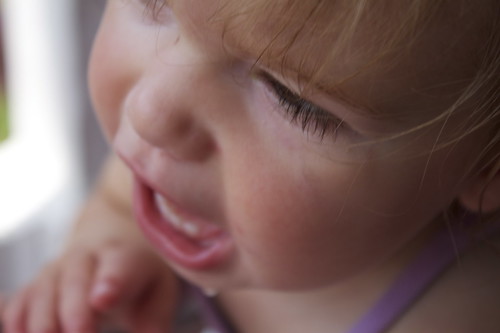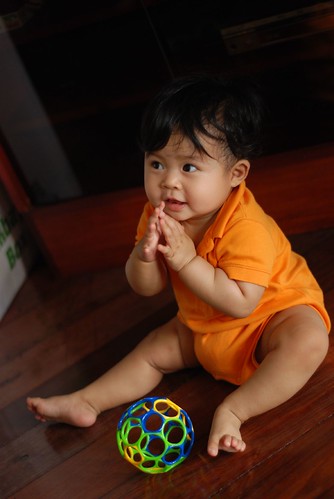Unless you’ve been hiding in a cave in Siberia, you’ve probably seen the video of an eight month old baby boy named Micah, who is laughing hysterically as his Dad repeatedly rips a job rejection letter into shreds. The video went viral after being tweeted by a pregnant Alyssa Milano with the tag line, “If this doesn’t make you smile, check your pulse.” The beautiful baby and his proud parents were even featured on the Today Show. To date, the video has been viewed over 5.5 million times.
Many friends and family members have sent me the video, sure that I would love it, “because you love babies so much.” There’s no doubt that Micah’s laugh is delightful, but instead of loving the video, I feel uncomfortable every time I watch it. Why don’t I view this video as a lovely interaction between a baby and his Dad? To help me answer that question for you, I’m going to ask you to go back and watch the video again- but this time, turn the volume off first, and just watch the baby. Watch Micah’s eyes. Watch and see if you can tell what he’s interested in. Watch and see if, with no sound, you come away with the impression that the baby is being slightly manipulated, interrupted, or frustrated in his exploration and play.
This is what I see when I watch the video, and while it’s not awful, it’s illustrative of the way many adults interact with, and play with babies. It’s very common to see babies being entertained, or to see adults trying to elicit a response from a baby- usually a laugh. And when a baby laughs, we feel good, and think the baby must be happy too. In fact, if you google “laughing baby” literally hundreds of videos will pop up- many of them showing babies (s)trapped in some kind of chair, while an adult, who often remains out of sight, tears paper, or makes some kind of novel noise, eliciting peals of (sometimes hysterical) laughter from the baby.
In one of the videos, the baby’s laughter bordered on tears, as he strained with his entire body to reach for the paper, which his Mom held just out of his reach. Finally, after about three minutes, the Mom leaned in to kiss the baby, and said, ‘Good boy!’ before the video ended, almost as if the baby was completing a performance or test of some kind. This video made me a little sad. Babies shouldn’t have to perform for adults, yet that’s sometimes what we ask of them.
Before I studied with Magda Gerber, I know I sometimes played with babies in similar ways, missing the very subtle cues that would allow me to be more “in tune” with them, and follow their lead, instead of taking over and entertaining, or trying to coax a laugh. But once I got a glimpse of what was possible when babies were allowed to be the”writers, directors, and actors in their own play” (to quote Magda Gerber) there was no going back for me.
In my experience there is no sound more wonderful than that of a baby”s chortle of delight when her fancy is tickled by a new discovery or the invention of her own game, and there is nothing that beats the feeling of being invited into a game that a baby initiates. I’ve actually had the very rare treat of being present when a baby “discovered” and “invented” the game of peek- a- boo for the first time- all on her own- without ever having first been introduced to the game by an adult. Talk about a priceless gift. I wish I had that on video to share with you!
It’s amazing to realize that if we just give babies time and space, if we follow their lead, they will invent their own games and sometimes invite us to play along. When we respect and trust our babies enough, we can slow down, and tune in to their cues. In this way, we may discover that we don’t have to work so hard to entertain, nor do we have to teach, but we can instead relax, enter, and share the baby’s world a little bit, as he discovers it on his own terms.
Trust me when I say it is a truly magical, delightful experience. Besides communicating trust and respect, when we refrain from entertaining, our babies don’t become hooked on, or look for constant stimulation in order to enjoy playing. In this way we protect their ability to discover and invent their own games.
For a short, beautiful, and insightful description by a new Mom reflecting on her baby’s play, (Pikler/Gerber style) please see Nadine Hillmar’s recent blog post, ‘I play. You watch.’ Nadine’s post has served as my antidote to the “Laughing Baby” video, and my hope is that by sharing it with you, you might be able to see another way to approach play with a young child, one that might be a little different from what is considered the norm, yet one that offers the possibility of discovering the joy of entering a young child’s world on her terms…
What do do think?




